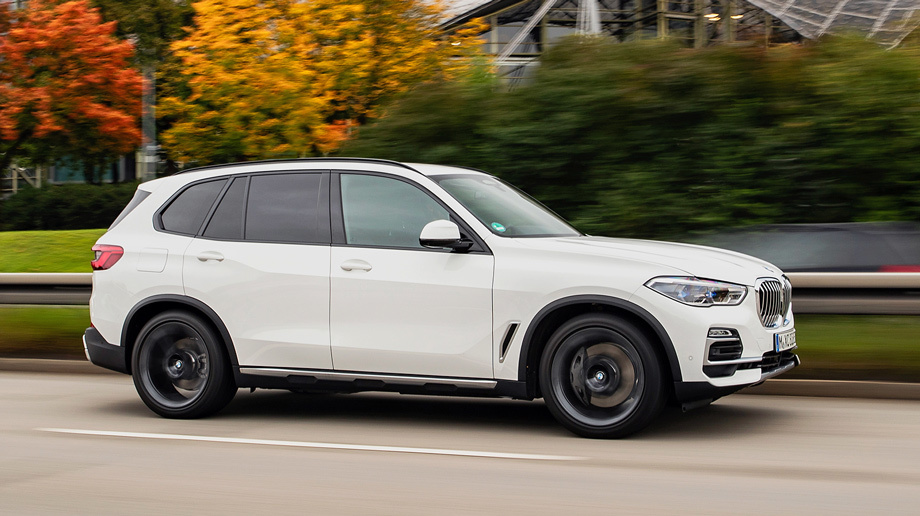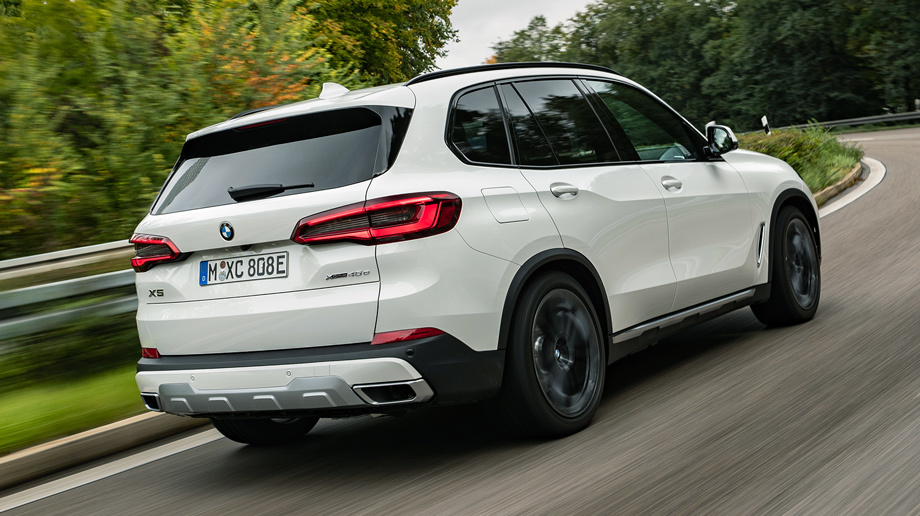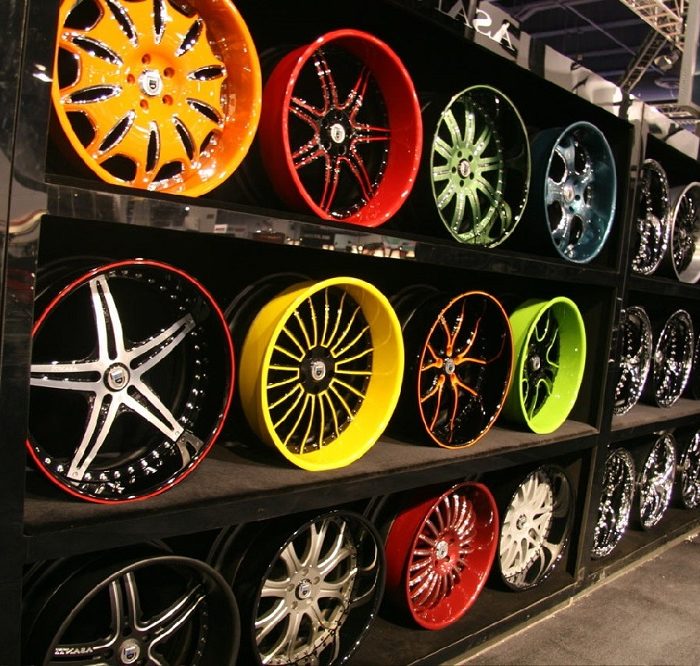The Germans talked about the plug-in hybrid based on the BMW X5 4 Series G05 crossover back in the fall of 2018, but production of the car began only in August 2019. In anticipation of the start of European sales, we were invited to the BMW X5 xDrive45e driving presentation combined with a test drive of the more relevant for us X6.

That xDrive40e model based on the former X5 F15 Series, along with the 7 Series gasoline-electric sedan, was part of a special iPerformance line. It is not remembered today, although there is more “performance” in the current recharged X5, on which I drive around Munich. Instead of a two-liter 245-horsepower four-cylinder engine, the hybrid of the new generation received a six-cylinder 3.0 with a capacity of 286 hp.
Judging by the characteristics, the electrical part is unchanged: the synchronous motor integrated into the eight-speed automatic ZF still develops 113 hp. Except that the capacity of the traction battery has been increased to 24 kWh from the previous nine. Therefore, the claimed range on electric traction has almost tripled and now varies within 67-87 km on the WLTP cycle. The BMW 745e sedan is equipped with the same power unit, but the battery is twice as modest there, and the torque is transmitted only to the rear wheels. In terms of electric power reserve, the xDrive45e is the leader among BMW plug-in hybrids, with the exception of the compact crossover X1 xDrive25Le for the Chinese market.
When the ignition is turned on, the turbo six-cylinder engine is quiet, but the car is ready to operate and starts silently. The default mode is Hybrid, although silent Electric can also be assigned in the settings. The test drive program doesn’t allow you to empty the battery without the intervention of the internal combustion engine. I don’t even want to do that, because the xDrive45e is not impressive as an electric car.
Acceleration dynamics are mediocre. The electric motor develops 265 N•m. It’s a good torque, say, for the Mini, but the X5 weighs almost 2.5 tons and accelerates with an effort. That is, it responds quickly to the accelerator’s actions, but there is no traction reserve. But it’s quiet: apart from the noise of the wind, the hum of tires and a small mooing (apparently transmission), almost nothing is heard. The turbo engine sleeps, even if you select the entire stroke of the right pedal, and wakes up only at the click of the kickdown.

Now I’m praising you! Accelerating is quite convincing in hybrid mode, although it doesn’t knock you into the seat. The crossover doesn’t give bright emotions, but just quickly gathers speed. The gasoline-electric power unit is a total of 54 hp more powerful than a single turbo engine of the xDrive40i version: 394 hp against 340. But this advantage is devalued — the hybrid is almost half a ton heavier. Therefore, it gains 100 km/h by a tenth of a second slower than the gasoline modification: in 5.6 seconds instead of 5.5. But this result is noticeably better than that of its predecessor, whose passport had 6.8 s.
In hybrid mode, I don’t even think about what processes are taking place in the bowels of the BMW. There is a feeling that the turbo engine spends quite a lot of time inactively — especially when coasting. As you would expect from a car that actively uses recuperation, the brake pedal slightly falters when forming feedback. Nevertheless, I have never made a mistake when calculating the deceleration.
In other driving disciplines, it is also not possible to find significant differences from co-platform crossovers. Pneumatic smoothness is good even with tires having a diameter of 21 inches at rim seat. In addition, the test cars are equipped with an optional steering mechanism with a variable gear ratio, coupled with a fully controlled chassis. Therefore, in turns, the hybrid seems lively, nimble and not heavy at all, resembling the ordinary X5 with the same mechatronic set.
The X5 xDrive45e doesn’t have much to compete with. The only rival seems to be the Porsche Cayenne E-Hybrid, a combined power unit’s capacity of which is higher — 462 hp. The Audi Q7 60 TFSI e (455 combined hp) is just getting ready for the premiere. Mercedes has also recently introduced a hybrid based on the new GLE, but there are doubts that the 320-horsepower diesel-electric GLE 350 de will be presented on all markets..

Already in 2020, eDrive zones were introduced in some European cities, in which hybrids should switch to electric traction, and automatically, at the command of the navigation system. Unsurprisingly, the army of plug-in BMWs will multiply further. The X3 PHEV and X1 PHEV crossovers are ready to join its ranks, and they will be accompanied by the 3 Series station wagon.
This is a translation. You can read the original here: https://www.drive.ru/test-drive/bmw/5dd2701aec05c4f019000084.html

Published May 18, 2023 • 5m to read






